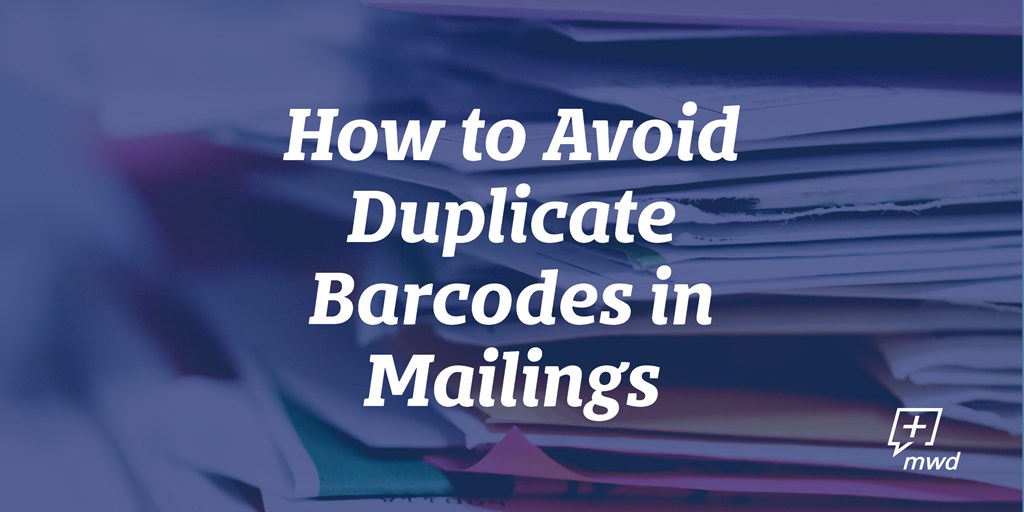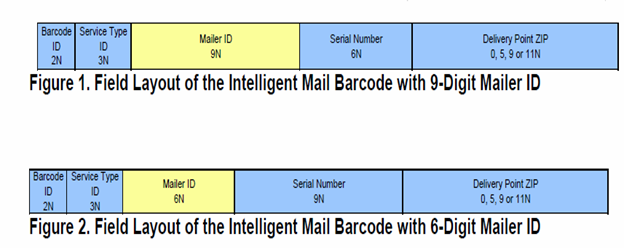The Problem: Costly Duplicate Barcodes
Data departments are generating duplicate barcodes for some of the mail their Lettershops are giving to comminglers. This is a serious problem that’s burning mailers of record like Midwest, left on the hook for potentially steep postal assessments and fines.
Let's start by getting a handle on the definition of a duplicate Intelligent Mail Barcode (Imb):
- To our data gurus, a duplicate IMb is STid+MID+Sequence Number+Zip5+Zip4+Delivery Point.
- To the USPS, it's a bit simpler. A duplicate IMb is: STiD + MID + Sequence Number ... repeated on multiple mail pieces. This sequence number cannot be reused for 45 days.
Compliance Penalties
Compliance costs are largely absorbed by comminglers, who put their name and reputations to every mailing they put out. But the responsibility lies with every party.
Lettershops must be processed in actual Full-Service environments, and penalties stemming from duplicate barcodes are going to prove costly to production facilities in an industry moving to best practices and universal compliance.
You can be sure if a commingler takes a hit for your postage errors, those fines will be passed back your way. Postal assessments are not in place yet; but, they are coming - and we're helping all our partners get their ducks in a row now. It all starts with good data!
Mail producers must keep updated software and processes in place; if that’s prohibitive, outsourcing data management to comminglers like Midwest is always an option.
So what needs to change?
- First, check your software. Eliminating duplicate barcodes and related errors are often as simple adjusting a software setting. We’ve cleared up 95% of data communication issues in a five-minute phone call between our data department and our partner data professionals.
- Next, keep your serial numbers straight. Usually, a Lettershop producing barcode dupes is not keeping serial numbers in order: If a job ends at piece number 87,000, the next job they start is not at piece 87,001. Instead, the software resets to zero, and the same barcodes are used for the new job.
- Finally, avoid all zeros. A mistake we frequently see is every mail piece having an all-zero sequence number, so all pieces end up being identical. The zipcodes are different, but the serial number is the same - and this is a problem.
Quality comminglers with great USPS scorecards and internal best-practices in place won’t be able to accept mail from customers or shops not meeting uniqueness standards for barcodes, or who don’t outsource their data functions to Presort operations ensuring Full Service compliance.
Keeping our qualifications
Full-Service qualifications are lost if certain standards are not met, such as ensuring accurate addressing, barcode quality, Move Update compliance and barcode uniqueness. The other rule to remember is that mailers must wait 45 days to re-use a barcode serial number.
It’s simple: Keep penalties at bay by keeping data in sequence. Comminglers take on all of the responsibility when preparing a mailing, but we need – and appreciate – cooperation from all our partners to be as good as we can, every mailing.
*The six and nine-digit serial numbers need to change on every mail piece.
Benefits of Intelligent Mail Barcodes
What is Data-driven Commingled Mail?
How to Work with Your Commingler
Don't be worried about duplicate barcodes in your next mailing. Contact us today wot work with data and commingle experts you can trust.

